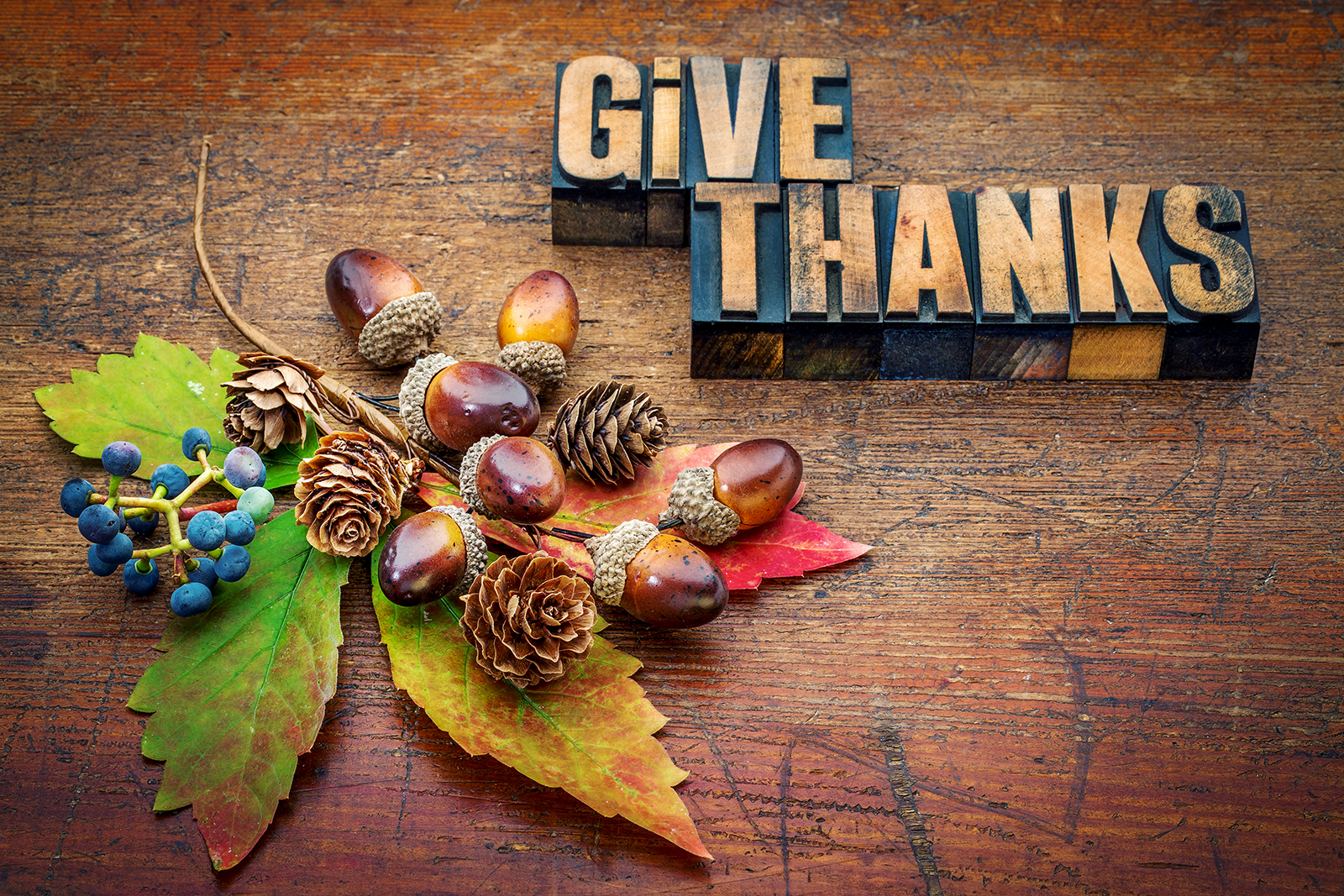Thanksgiving is the day we set aside to recognize and appreciate how fortunate we are for all we have, something easy to forget in the dash and demands of everyday life. The idea of making this particularly heartfelt occasion a bit less wasteful and a bit more in tune with nature is in keeping with that spirit of gratitude. It’s also consistent with the historic truth that the very first celebration actually paid homage to the land and to the harvest.
Bestselling “Food Rules” author Michael Pollan once wrote, “Don’t eat anything your grandmother wouldn’t recognize as food.” Using ‘GoGurt’ as an example, he said grandma may have thought it might be toothpaste. Fact is Thanksgiving starts off on a “green” carbon footing since it is one of the few holidays in which most of us eat an entire meal of traditional, grandma-approved fare.
Think seasonal, local, organic
As every meal did for Grandma, a traditional Thanksgiving dinner includes foods that are seasonal, such as potatoes, sweet potatoes, squash, carrots, broccoli, and pumpkin or applies for pies. Seasonal produce is eco-friendly because, in all likelihood, it is local, and therefore not expending the extra fuel needed to transport it or even import it from milder climates, not to mention helping to support nearby farmers where possible and, let’s face it, just plain better tasting! Unless you are one of the few Long Islanders who grow their own vegetables, this time of year particularly, consider local farm stands and supermarkets for seasonal, local and organic produce.
Green gobbler
Turkey, the usual focus of the feast, is of course native to North America, so it’s raised at least domestically. The nation’s largest turkey producer, Butterball, is located North Carolina with other major producers in Minnesota, Arkansas, and Virginia. Still, there are a handful of poultry farms closer to home, including Long Island’s own Makinajian Farms in Huntington, Mecox Bay Farm in Bridgehampton, and Miloski’s Poultry Farm in Calverton.
Turkeys, as well as ducks and geese, raised on Long Island farms and elsewhere that meet certified organic standards, including being raised free of pesticides and other chemicals in feedstock, make them great “green” choices, often available through specialty retailers such as nearby Trader Joe’s. If you want to go totally vegetarian, try a Tofurky Roast made with organic soybeans
Green guzzling
Starting with filtered tap water rather than bottled, serving “green” drinks is all about thinking “local” and choosing natural and organic ingredients once again. Choose the quintessential Thanksgiving drink, apple cider, produced by an orchard nearby . Consider also making your own juices or adding a dash of juice from oranges, cranberries, pineapples, lemons or limes, and serve fair trade tea and coffee.
When it comes to alcoholic beverages, “green” is of course not about adding a bit of Green Crème de Menthe or Green Apple Schnapps to your glass, although that may be tasty and festive. Only about a handful of wines are certified organic by process, but many earn the label of organic with by their ingredients. Try a taste test the offerings from Long Island’s sustainable vineyards, micro breweries or distilleries.
Waste less
On Thanksgiving, we all not only tend to eat too much, we also tend to cook too much to begin with, leading to big-time waste. An Environmental Protection Agency study found that Americans generate about 30 million tons of food waste every year, and all but about two percent of that ends up in landfills. Not only is that an obscene statistic in light of world hunger, the rotting food that ends up in landfills produces methane, a huge source of greenhouse gases.
The bottom line for Thanksgiving? Start by making and saving less food, if possible, and then send as many leftovers as possible home with the guests. Soon after the big day, drop off that unopened extra jar of cranberry sauce and other nonperishables at local food pantries.
And, break out the good, real china, the crystal glasses, the cloth tablecloths and napkins, etc., instead of paper or plastic disposables. And, decorate your table with nature’s bounty as well, fruit, vegetables or potted plants from neighborhood farmers markets or nurseries.
Save more
While cooking the Thanksgiving feast, heat from the oven and stovetop fill the house, not mention body heat of guests, shift that thermostat down to cut energy use, and add to the ambience with soy or beeswax candles. Speaking of the oven, it’s more energy efficient to pack the oven to capacity to heat as many things at once as possible, and to pack the dishwasher to cut water use.
Green is the new black
Finally, consider turning Black Friday “green” by joining in “Buy Nothing Day,” a global initiative in response to the over consumption that goes on during the holidays.
By Nancy Hiler via nancy@builtwellsolar.com
Do you have a “green” Thanksgiving or other holiday idea to add? Have you gone “green” in other ways? Do you use or sell “green” products or services? Are you or your business taking steps to be green? Please email your tip or idea to nancy@builtwellsolar.com and we will credit you if we use it in a future blog or newsletter.

